On August 20th, Canon’s latest promotional video was exposed. The new machines that appeared in the promotional video include the recently released Canon EOS M anti-EOS M6 Mark ii, and the mid-range EOS SLR camera EOS 90D.
According to the Camera Information Blog CanonRumors Report, Canon will release the EOS M6 Mark ii on August 29th or August 30th. EOS 90D two new cameras. As you can see from the naming scheme, the EOS M6 Mark ii is an upgrade to the EOS M6, and the EOS 90D is the successor to the EOS 80D.

EOS M6 Mark ii form factor, button layout and previous generation EOS M6 has not changed much. The flip screen still uses the upturned design, because the fuselage does not have a viewfinder relationship, so the fold screen canDo more to fit the fuselage.
Upturning may be blocked by the device attached to the hot shoe, but if it is changed to a right-sided folding design like the EOS M50 at this time, the screen may block the right side of the fuselage.
If the camera is turned down like the EOS M5, it is inconvenient when the camera is attached to the stabilizer. In this way, it is still reasonable to continue to keep the EOS M6 Mark ii up-and-down design. This also eliminates the need to redesign the fuselage and reduce the cost of designing finished products and purchasing accessories.
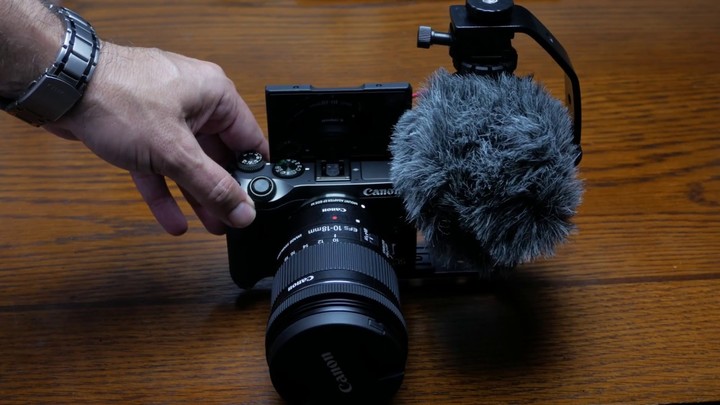
▲ EOS M6 + RODE VIDEOMICRO. Image from: YouTuber Photo Gear Fun< /a>
After all, there are now a number of kits that can move a microphone or monitor placed on a hot shoe to another location. A small microphone like RODE VIDEOMICRO can also be placed next to the machine by some special structure or method.In this case, when the user takes a self-portrait, the top microphone will not block the framing. Compared to the problems that occur when turning down and rolling over, it is convenient to turn up.
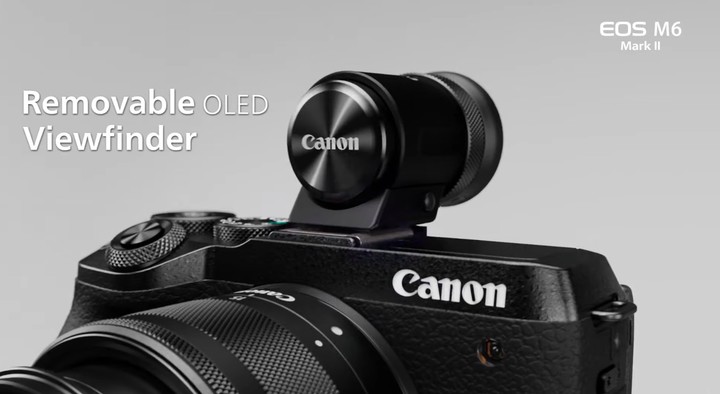
As with the previous generation, the Canon EOS M6 Mark ii can still be connected to the electronic viewfinder via the hot shoe. The model of the viewfinder is not emphasized in the video, it should be the same as the one launched when the EOS M6 was launched.
After using the detachable electronic viewfinder, the EOS M6’s flip screen design is a bit more reasonable than the EOS M5. Although you can’t pick up the equipment that needs hot shoes after the electronic viewfinder, but for the users and scenes of the EOS M6 positioning, they need to use the hot shoe and the viewfinder at the same time. acceptable.
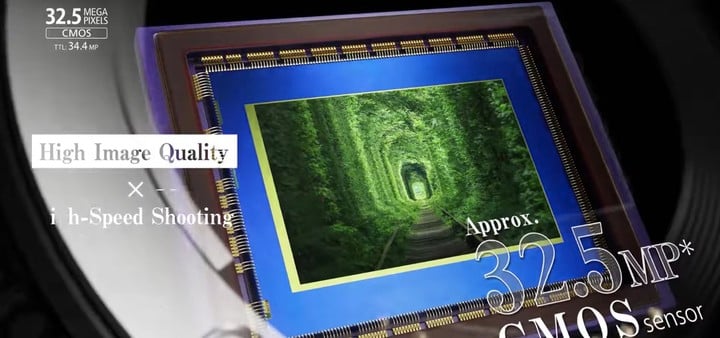
The appearance does not change much. The update of EOS M6 Mark ii is mainly focused on performance and configuration.
EOS M6 Mark ii This time I replaced a 3250 pixel Canon APS-C format sensor with Canon’s latest DIGIC 8 image processor. After replacing the sensor with a higher pixel, the image resolution of the EOS M6 Mark ii should be improved.
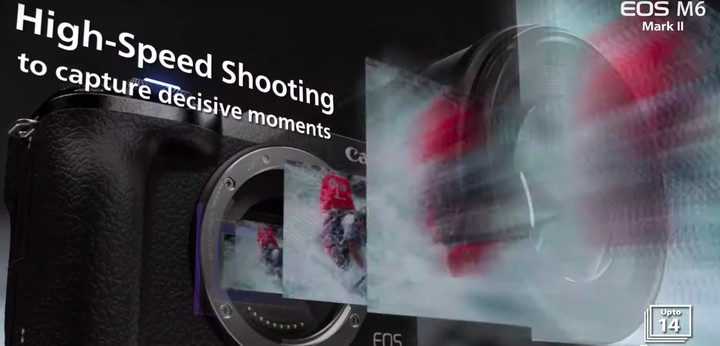
The new machine is equipped with a focusing system with 143 AF points, which supports Canon’s own full-pixel dual-core autofocus technology. The continuous shooting is also increased from 9 frames per second to 14 frames per second. Performance and performance It is still a lot stronger than it is.
Besides, video capabilities are also part of this highlight update.
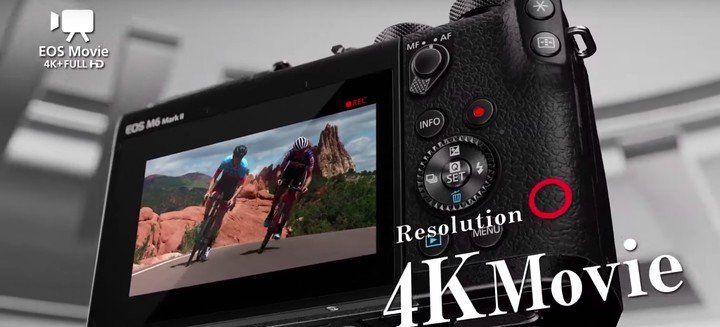
After Canon put 4K video capture on the EOS M50, the EOS M6 Mark ii now also supports 4K 30fps shooting, up to 120fps in 1080P. In this case, the user has more room to shoot slow motion in the 1080P state.
Also, the EOS M6 Mark ii also supports 1080P 25fps HDR video capture. Although the specification limit is a bit large, it is a bit better compared to the EOS M6 without HDR mode.
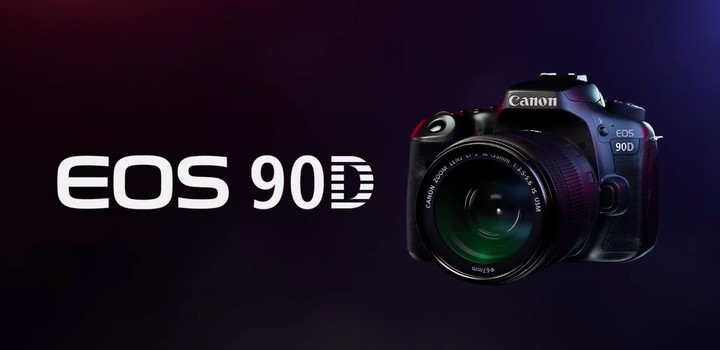
Like the EOS M6 Mark ii, EOS 90D updates are all based on performance and The main specifications.
The EOS 90D is also equipped with Canon’s 32.5 megapixel APS-C format CMOS sensor with a DIGIC 8 image processor. The body is equipped with a full-pixel dual-core focusing system with 45 cross-focus points, supporting up to 10 shots per second, similar to the focus system specifications used in the EOS 80D.
Video, EOS 90D also supports 4K 30fps and 1080P 120fps, and can shoot 1080P 30fps HDR video. For those who want to improve video latitude, EOS 90D also has a small upgrade to meet the needs, but the specifications are still a bit Low only.
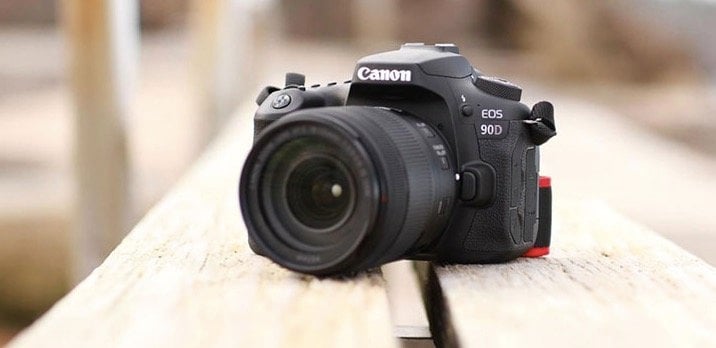
Overall, the upgrade of the EOS 90D is similar to the EOS M6 Mark ii. But if this is a product iteration, it would be better to say that the EOS 90D and the EOS M6 Mark ii are perfect EOS 80D and EOS M6.
On the other hand, we can also see that Canon is still developing new machines for the EOS M series and EOS SLR series.
In the face of the EF bayonet SLR system that he built, Canon has a huge lens group and user base. It is not realistic to transition to the EOS R system at once. Starting with the flagship and full-frame system, we will gradually shift the main force to the non-inverse system, so as to attract new users and make as many old users as possible to transition to the new system.

Compared to the SLR system, the EF-M’s anti-blocking pressure is much smaller. Since Canon has announced that the R-mount can be compatible with the APS-C frame, it is a matter of time before the APS-C is launched on the EOS R series. Allowing EOS M users who don’t have any lens burden to transition to the EOS R system earlier will be better than slow updates like this.
However, Canon may consider that the lens layout of the current EOS R system is mainly concentrated on the high-end lens, and rarely enters the EOS M positioning or mid-range small lens. Now the user may transition to the EOS R system. trouble.
But in any case, Canon should be in the state of “family three” for a long time, so the development of the three lines will also diversify the company’s investment and attention.

Before EF and EOS MIntegration into the EOS R system will allow Canon to maintain its advantage in subsequent competition.